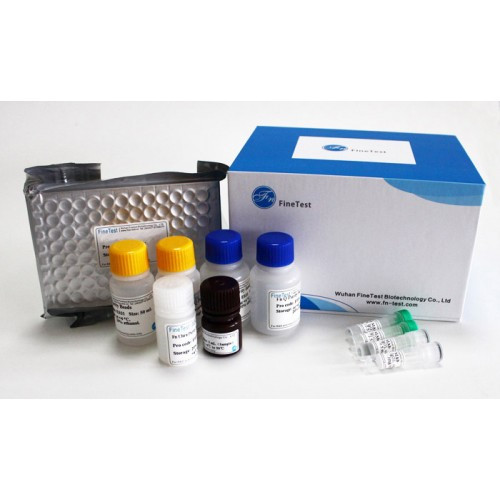Product Description
Recombinant Mouse Glypican-1 (Gpc1) (Active) is available at Gentaur for Next week Delivery.
Gene Name: Gpc1
Alternative Names : Glypican-1;Gpc1
Expression Region : 24-529aa
AA Sequence : DPASKSRSCSEVRQIYGAKGFSLSDVPQAEISGEHLRICPQGYTCCTSEMEENLANHSRMELESALHDSSRALQATLATQLHGIDDHFQRLLNDSERTLQEAFPGAFGDLYTQNTRAFRDLYAELRLYYRGANLHLEETLAEFWARLLERLFKQLHPQLLPDDYLDCLGKQAEALRPFGDAPRELRLRATRAFVAARSFVQGLGVASDVVRKVAQVPLAPECSRAIMKLVYCAHCRGVPGARPCPDYCRNVLKGCLANQADLDAEWRNLLDSMVLITDKFWGPSGAESVIGGVHVWLAEAINALQDNKDTLTAKVIQACGNPKVNPHGSGPEEKRRRGKLALQEKPSTGTLEKLVSEAKAQLRDIQDFWISLPGTLCSEKMAMSPASDDRCWNGISKGRYLPEVMGDGLANQINNPEVEVDITKPDMTIRQQIMQLKIMTNRLRGAYGGNDVDFQDASDDGSGSGSGGGCPDDTCGRRVSKKSSSSRTPLTHALPGLSEQEGQKTS
Sequence Info : Full Length of Mature Protein
Tag Info : C-terminal 6xHis-tagged
Theoretical MW : 56.7 kDa
Storage Buffer : Lyophilized from a 0.2 ?m filtered 1xPBS, pH 7.4
Endotoxin Level : Less than 1.0 EU/µg as determined by LAL method.-
Biological Activity : The ED50 as determined by its ability to bind Human FGFb in functional ELISA is less than 10 ug/ml.
Storage : Short term: -20°C; Long term: -80°C. Minimize freeze and thaw cycles.
Research Area : Signal Transduction
Restriction : For Research Use Only. Not for use in diagnostic procedures, drug use, or for administration to humans or animals.
Relevance : Glypican-1 is a cell membrane protein and belongs to the glypican family. The protein may act as a catalyst in increasing the rate of conversion of prion protein PRPN(C) to PRNP(Sc) via associating (via the heparan sulfate side chains) with both forms of PRPN, targeting them to lipid rafts and facilitating their interaction. It is required for proper skeletal muscle differentiation by sequestering FGF2 in lipid rafts preventing its binding to receptors (FGFRs) and inhibiting the FGF-mediated signaling.
Function : Cell surface proteoglycan that bears heparan sulfate. Binds, via the heparan sulfate side chains, alpha-4 (V) collagen and participates in Schwann cell myelination (By similarity). May act as a catalyst in increasing the rate of conversion of prion protein PRPN(C) to PRNP(Sc) via associating (via the heparan sulfate side chains) with both forms of PRPN, targeting them to lipid rafts and facilitating their interaction. Required for proper skeletal muscle differentiation by sequestering FGF2 in lipid rafts preventing its binding to receptors (FGFRs) and inhibiting the FGF-mediated signaling. Binds Cu(2+) or Zn(2+) ions.
Involvement in disease :
Subcellular location : Cell membrane, Lipid-anchor, GPI-anchor, Extracellular side, Endosome
Protein Families : Glypican family
Tissue Specificity :
Paythway :
Uniprot ID : Q9QZF2
 Euro
Euro
 British Pound
British Pound
 US Dollar
US Dollar








